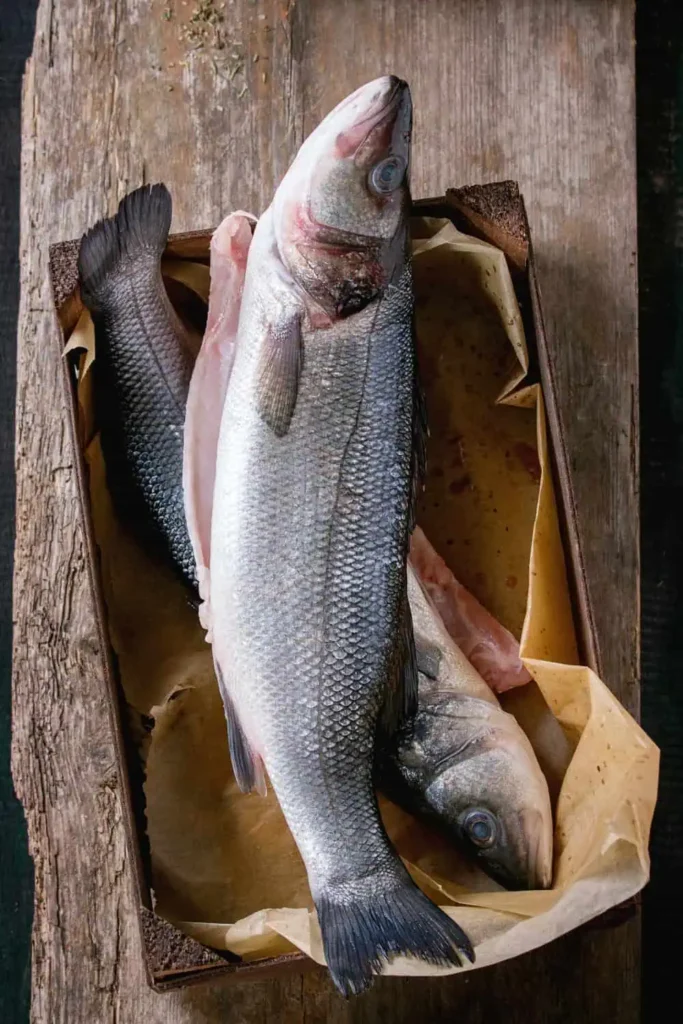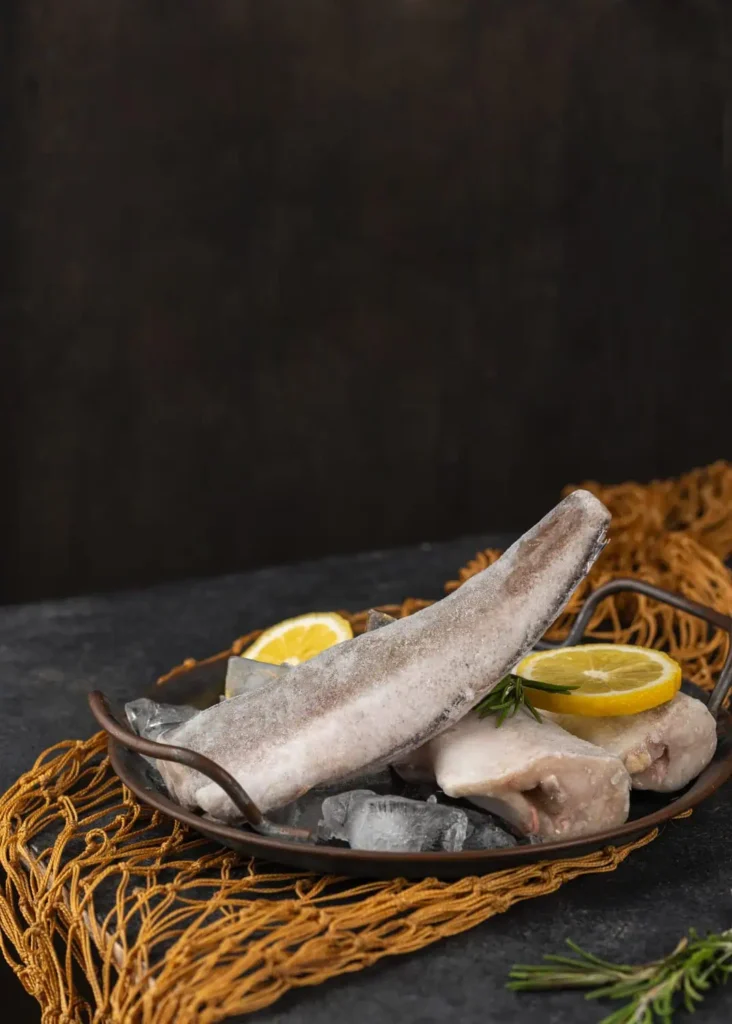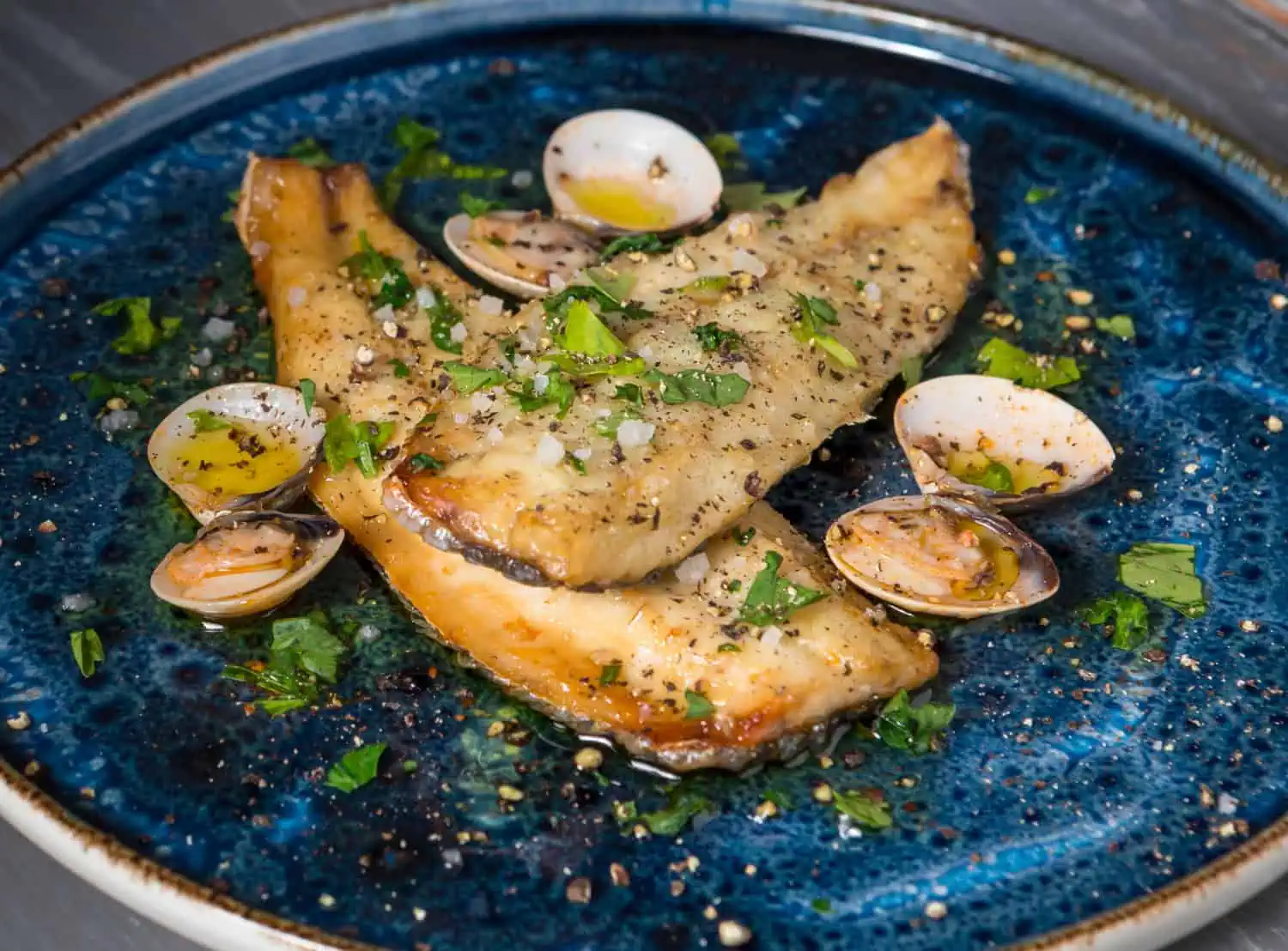When it comes to seafood, few choices are as popular and versatile as sea bass and branzino. These two fish are staples in cuisines around the world, prized for their delicate flavors, nutritional benefits, and adaptability in the kitchen. But if you’ve ever wondered, “What’s better, sea bass or branzino?”, you’re not alone. Many people are confused about the differences between these two fish, and for good reason—they’re closely related and often used interchangeably in recipes.
In this comprehensive guide, we’ll explore everything you need to know about sea bass and branzino. From their origins and taste profiles to their nutritional benefits and cooking methods, we’ll help you decide which fish is the better choice for your next meal. Let’s dive in!
What Is Sea Bass?
The term sea bass refers to a broad category of fish that belong to the family Moronidae or Serranidae. These fish are found in oceans around the world and include several species, such as:
- European sea bass (Dicentrarchus labrax)
- Black sea bass (Centropristis striata)
- White sea bass (Atractoscion nobilis)
- Chilean sea bass (Dissostichus eleginoides, also known as Patagonian toothfish)
- Asian sea bass (Lates calcarifer, also called barramundi)
- Striped bass (Morone saxatilis)
Each type of sea bass has its own unique characteristics, but they all share a mild, slightly sweet flavor and a firm, flaky texture. This makes them a favorite among chefs and home cooks alike.
What Is Branzino?
Branzino is a specific type of sea bass—the European sea bass (Dicentrarchus labrax). The name branzino is Italian, and the fish is a staple in Mediterranean cuisine. It’s also known as loup de mer in French and lubina in Spanish.
Branzino is typically farmed in the Mediterranean Sea and nearby waters, making it widely available year-round. It’s known for its mild, delicate flavor and tender, flaky texture, which pairs beautifully with simple seasonings like lemon, olive oil, and fresh herbs.
Key Differences Between Sea Bass and Branzino
While branzino is technically a type of sea bass, there are some key differences between branzino and other types of sea bass. Let’s break it down:
1. Origin and Habitat
- Sea Bass: Found in oceans worldwide, including the Atlantic, Pacific, and Indian Oceans. Different species thrive in different environments, from shallow coastal waters to deep-sea habitats.
- Branzino: Native to the Mediterranean Sea, the Black Sea, and the Eastern Atlantic Ocean. Most branzino sold today is farm-raised in the Mediterranean region.
2. Size and Appearance
- Sea Bass: Size varies widely depending on the species. For example, black sea bass typically weigh 1-5 pounds, while Chilean sea bass can grow up to 200 pounds. Colors range from dark gray to silver.
- Branzino: Smaller in size, usually weighing 1-3 pounds. It has a streamlined, silvery body with a slightly darker back.
3. Flavor and Texture
- Sea Bass: Richer and meatier flavor, with a buttery texture. Some species, like Chilean sea bass, have a higher fat content, which gives them a more luxurious mouthfeel.
- Branzino: Mild, delicate flavor with sweet undertones. The texture is light and flaky, making it ideal for simple, elegant dishes.
4. Culinary Uses
- Sea Bass: Versatile and suitable for a wide range of cooking methods, including grilling, roasting, and pan-searing. Its richer flavor pairs well with bold seasonings and sauces.
- Branzino: Often served whole and prepared with minimal seasoning to highlight its natural flavor. Popular in Mediterranean-style recipes.

Nutritional Comparison: Sea Bass vs. Branzino
Both sea bass and branzino are excellent choices for a healthy diet. They’re low in calories, high in protein, and rich in essential nutrients like omega-3 fatty acids. Here’s a closer look at their nutritional profiles:
| Nutrient (per 100g) | Branzino | Sea Bass (average) |
|---|---|---|
| Calories | 97 | 124 |
| Protein | 19g | 24g |
| Fat | 2g | 2.5g |
| Omega-3 | 0.8g | 1.2g |
| Cholesterol | 63mg | 70mg |
Health Benefits
Both fish offer numerous health benefits, including:
- Heart Health: Rich in omega-3 fatty acids, which help reduce inflammation and lower the risk of heart disease.
- Brain Health: Omega-3s also support cognitive function and may reduce the risk of neurodegenerative diseases.
- Weight Management: Low in calories and high in protein, making them ideal for weight loss or maintenance.
- Bone Health: Good source of vitamin D and calcium, which support strong bones.
Cooking Sea Bass and Branzino: Methods and Recipes
One of the reasons sea bass and branzino are so popular is their versatility in the kitchen. Both fish can be prepared using a variety of cooking methods, depending on your taste preferences and the occasion.
Popular Cooking Methods
- Grilling:
- Perfect for whole fish or fillets.
- Adds a smoky flavor and crispy skin.
- Works well with marinades or simple seasonings like olive oil and herbs.
- Baking:
- Ideal for whole fish or larger fillets.
- Retains moisture and allows for even cooking.
- Pair with vegetables, lemon, and white wine for a complete meal.
- Pan-Searing:
- Creates a golden, crispy crust on the outside.
- Quick and easy, perfect for weeknight dinners.
- Use butter or olive oil for added richness.
- Steaming:
- Preserves the delicate flavor and texture of the fish.
- A healthy option that requires minimal added fat.
- Often paired with Asian-inspired flavors like ginger and soy sauce.
- Poaching:
- Gentle cooking method that keeps the fish moist.
- Infuses the fish with the flavors of the poaching liquid (e.g., broth, wine, or aromatics).
Recipe Ideas
- Mediterranean-Style Branzino: Roast a whole branzino with olive oil, lemon, garlic, and fresh rosemary. Serve with a side of roasted vegetables or a light salad.
- Pan-Seared Sea Bass: Season sea bass fillets with salt, pepper, and paprika. Sear in a hot skillet with butter until golden brown. Serve with a creamy lemon-butter sauce.
- Asian-Inspired Steamed Branzino: Steam a whole branzino with ginger, scallions, and soy sauce. Garnish with fresh cilantro and serve with jasmine rice.
- Grilled Chilean Sea Bass: Marinate Chilean sea bass in a mixture of miso, honey, and sesame oil. Grill until caramelized and serve with sautéed bok choy.
Sustainability and Environmental Impact
When choosing between sea bass and branzino, it’s important to consider sustainability. Overfishing and unsustainable farming practices can have a significant impact on marine ecosystems.
Branzino Sustainability
- Most branzino sold today is farm-raised in the Mediterranean.
- Modern aquaculture practices are generally sustainable, with strict regulations in place to protect the environment.
- Look for certifications like ASC (Aquaculture Stewardship Council) to ensure responsible farming.
Sea Bass Sustainability
- Sustainability varies depending on the species:
- Chilean sea bass: Overfished in some areas, but certified sustainable options are available (look for MSC certification).
- Black sea bass: Populations are generally healthy, but check for local fishing regulations.
- European sea bass: Wild stocks are declining, so farmed options are more sustainable.
Cost and Availability
Pricing
- Branzino: Typically more expensive due to its Mediterranean origin and popularity in fine dining. Prices range from $10 to $20 per pound.
- Sea Bass: Prices vary widely depending on the species. Black sea bass is more affordable ($8-$15 per pound), while Chilean sea bass can cost $25-$40 per pound.
Where to Buy
- Local fish markets
- Specialty seafood shops
- High-end grocery stores
- Online seafood retailers

FAQs About Sea Bass and Branzino
Is branzino the same as sea bass?
Yes, branzino is a specific type of sea bass—the European sea bass. However, not all sea bass is branzino.
Which is healthier, sea bass or branzino?
Both are healthy choices, but branzino is slightly lower in calories and fat. However, sea bass (especially Chilean sea bass) has more omega-3 fatty acids.
What’s the best way to cook branzino?
Branzino is best cooked whole and roasted or grilled with simple seasonings like lemon, olive oil, and fresh herbs.
Why is Chilean sea bass so expensive?
Chilean sea bass is prized for its rich, buttery flavor and high fat content. It’s also more difficult to catch and has limited availability, which drives up the price.
Can I substitute branzino for sea bass in recipes?
Yes, branzino can be substituted for other types of sea bass in most recipes. Just keep in mind that branzino has a milder flavor and lighter texture.
Final Verdict: What’s Better, Sea Bass or Branzino?
The answer to “What’s better, sea bass or branzino?” ultimately depends on your personal preferences and cooking needs. Here’s a quick summary to help you decide:
- Choose branzino if you prefer a mild, delicate flavor and want a fish that’s easy to prepare whole. It’s perfect for Mediterranean-style dishes and light, healthy meals.
- Choose sea bass if you’re looking for a richer, meatier flavor and a more versatile fish that can stand up to bold seasonings and sauces. Black sea bass and Chilean sea bass are particularly popular choices.
Both fish are delicious, nutritious, and versatile, so you really can’t go wrong. Why not try both and see which one you like best?
Conclusion
Whether you’re a seafood aficionado or a home cook looking to try something new, sea bass and branzino are excellent choices for your next meal. Both fish offer unique flavors, textures, and health benefits, making them a welcome addition to any diet. By understanding their differences and learning how to prepare them, you can make an informed choice and create a dish that’s sure to impress.
So, the next time you’re at the fish market or planning a dinner party, consider the question: What’s better, sea bass or branzino? With this guide, you’ll have all the information you need to make the perfect choice.

